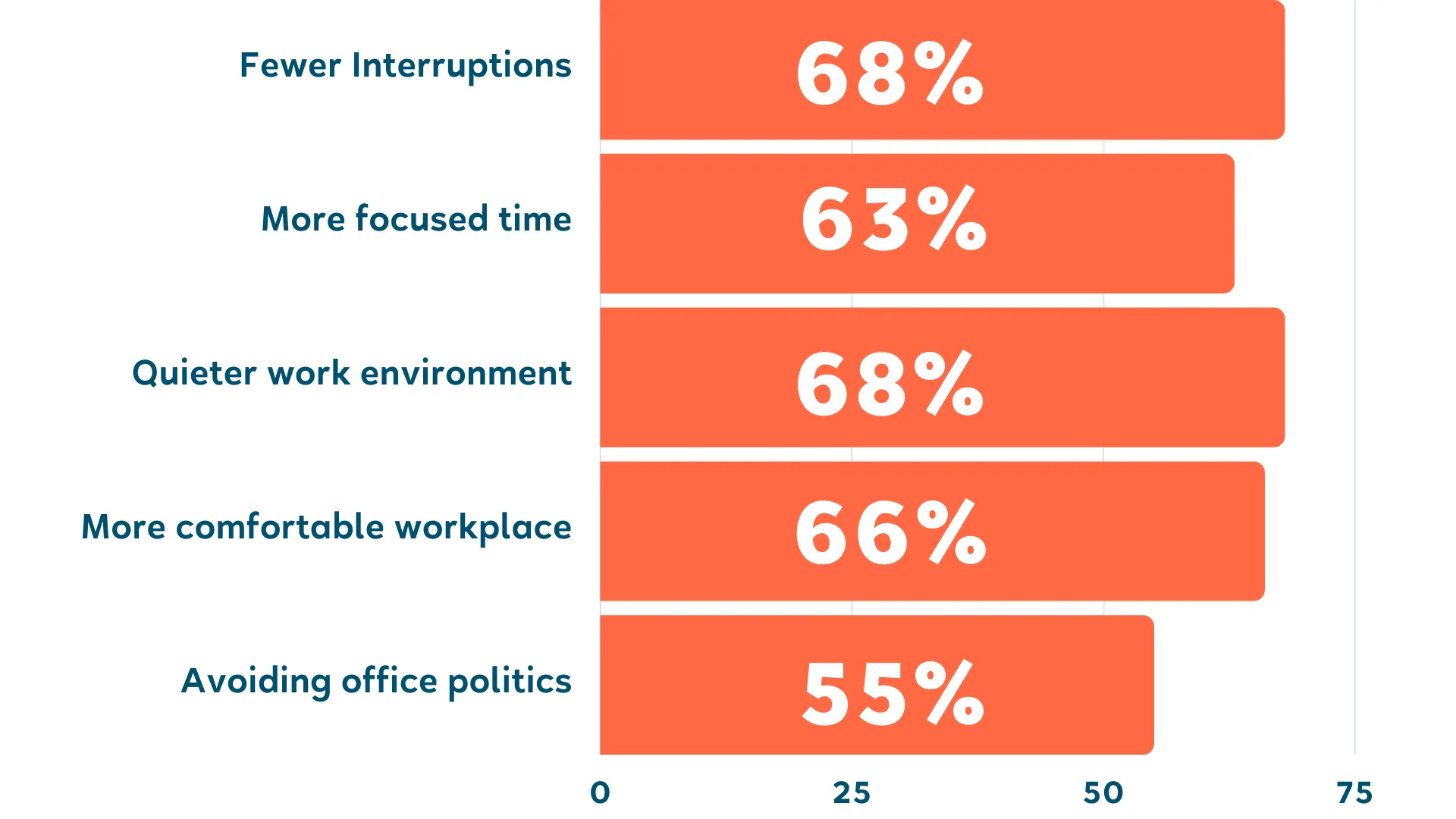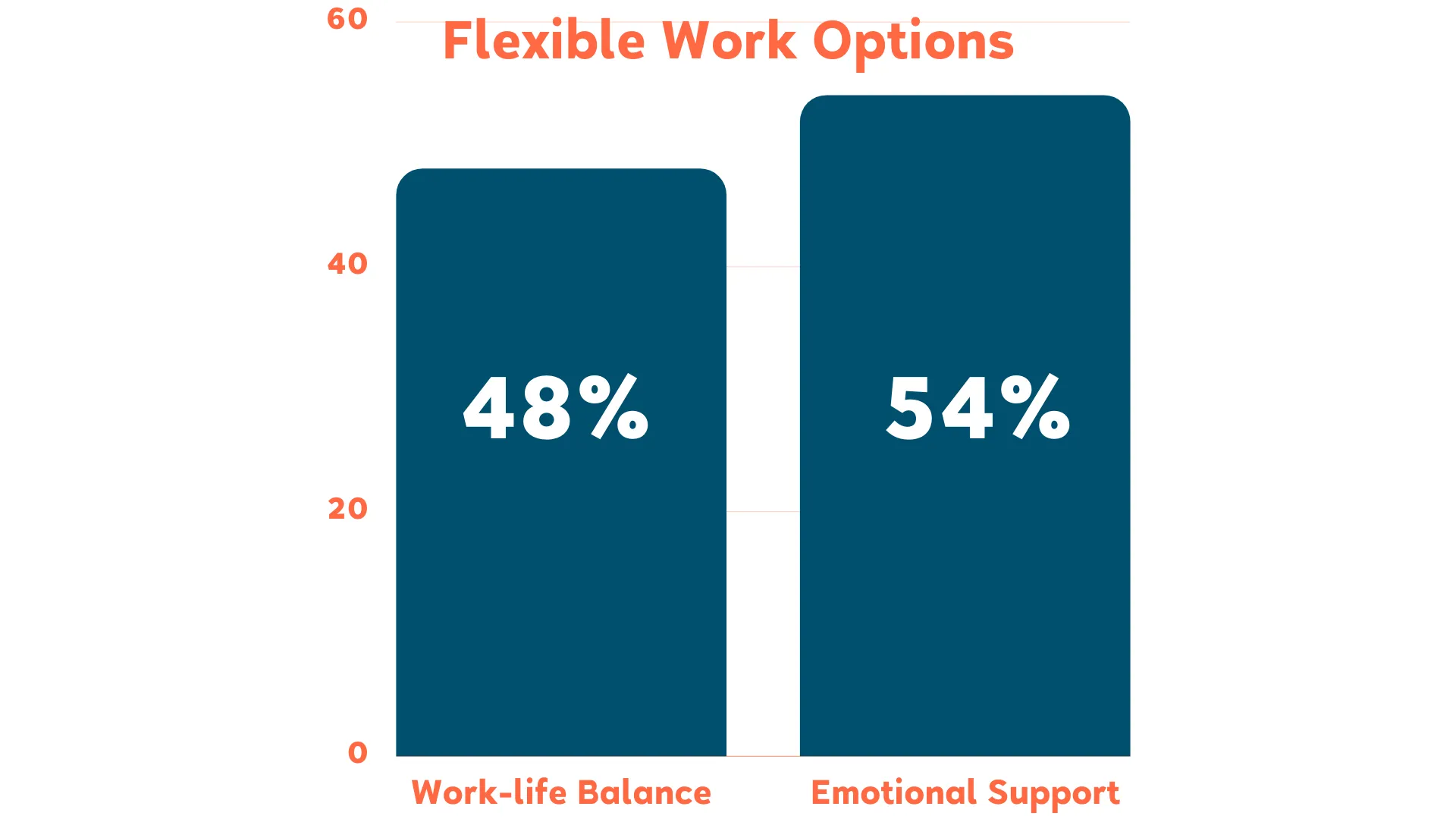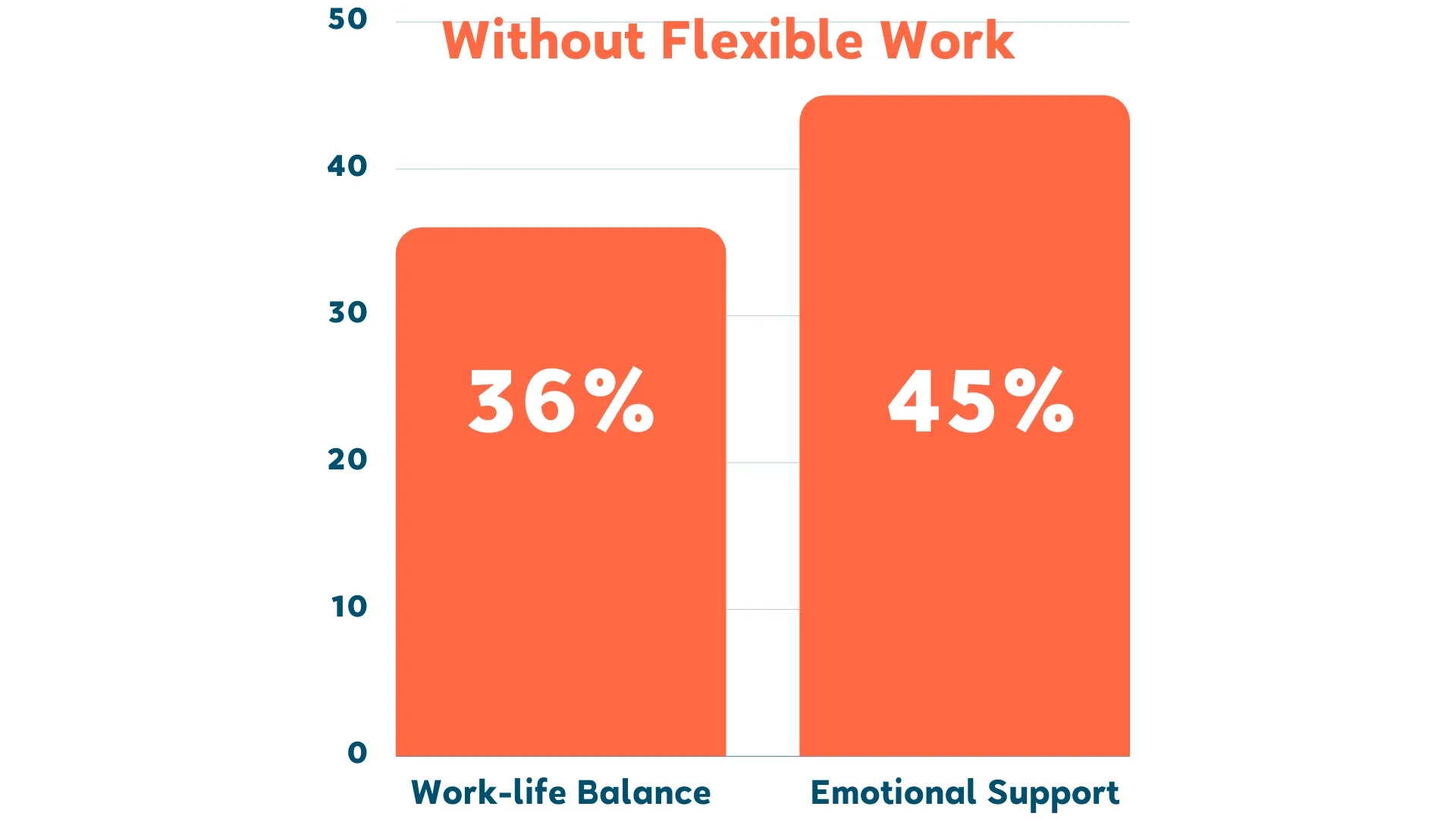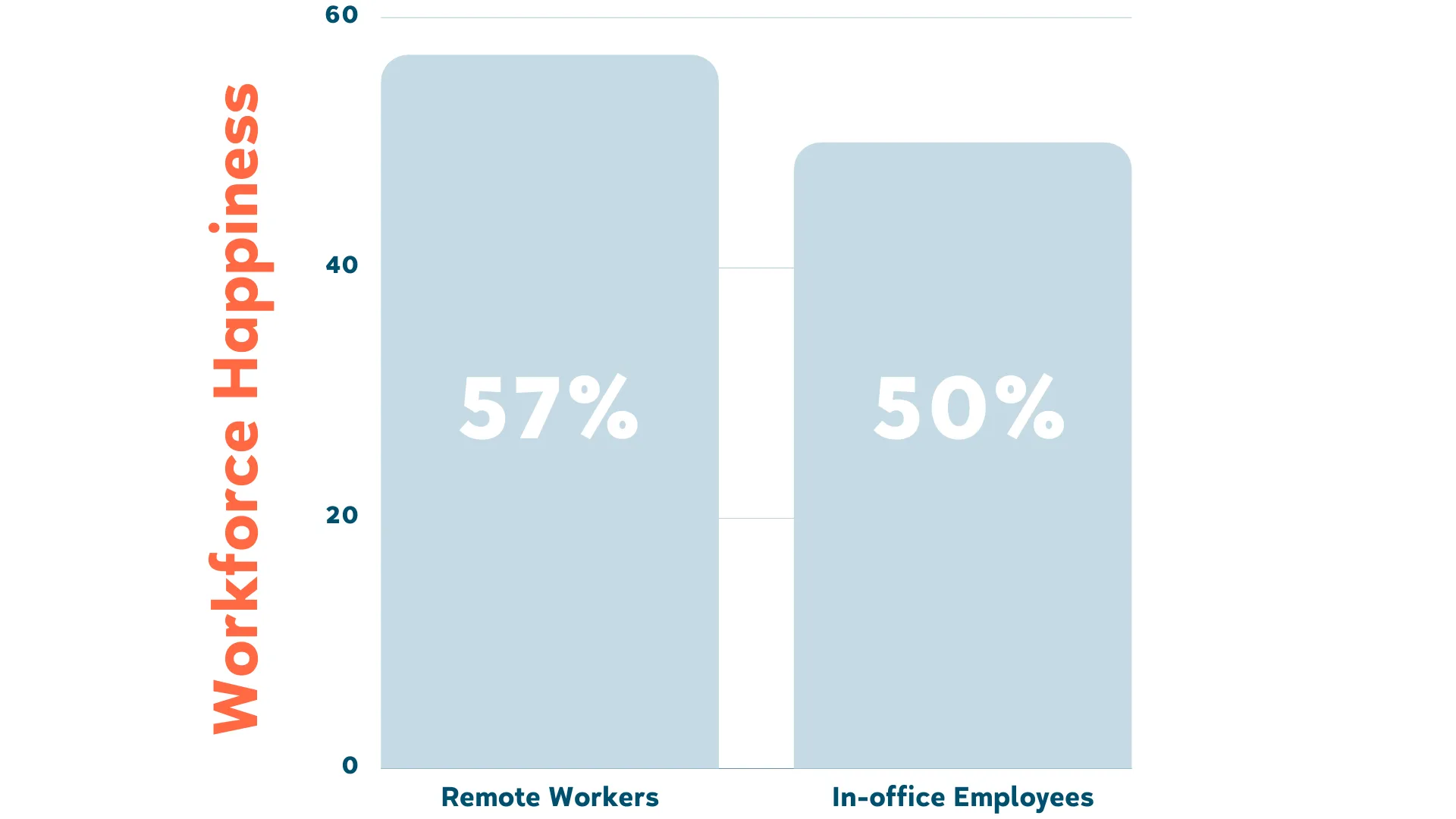When the pandemic began in March 2020, the work landscape changed dramatically and permanently. So too has the perception of remote work, as the benefits for employers and employees alike have come to light.
Bạn đang đọc: Remote Work Statistics: Navigating the New Normal | FlexJobs
Having a choice of work environment and location is now a key factor for many job seekers when searching for a better work-life balance and evaluating new career opportunities.
Just how much has remote work impacted the notion of business as usual? Here are some intriguing remote work statistics that offer a by-the-numbers look at where things stand.
Key Remote Work Statistics
The massive transition to remote work during the pandemic was a necessity for many office-based companies that wanted to maintain operations. However, many of these same companies realized the benefits of remote work and, as a result, are adopting hybrid work models for the long haul.
In May 2021, a Mercer study found that 70% of companies said they were planning to adopt the hybrid model. Many companies have already made the switch, including prominent brands such as Adobe, Salesforce, Spotify, and Twitter. And Microsoft’s Work Trend Index (published in March 2021) found that 66% of employers around the world are redesigning their workplaces to accommodate hybrid work arrangements.
The bottom line is that companies have realized that physically being at the office full-time isn’t necessary to produce great results.
Employees are eager to continue working remotely or hybrid too. According to FlexJobs’ 10th Annual Survey (conducted between July and August 2021), 58% of respondents report wanting to be full-time remote employees post-pandemic, while 39% want a hybrid work environment. That’s an astounding 97% of workers who desire some form of remote work!
– Remote Work Attracts and Retains Talent
Between March and April 2021, a FlexJobs survey found that 58% of respondents would “‘absolutely’ look for a new job if they cannot continue remote work.”
Those sentiments have not changed. The FlexJobs 10th Annual Survey also found that 44% of respondents say they know at least one person who has quit or is planning to quit because their employers are requiring them to work from the office. The same survey also revealed that 24% of workers say the ability to work from home is so important to them that they are willing to take a 10-20% pay cut to work remotely, and 21% would give up some vacation time.
Offering hybrid and remote work options may benefit companies that want to retain top talent. According to an April 2021 Talent Works survey of U.S.-based hiring managers, 90% of senior executives now expect to work from home. And a FlexJobs survey conducted in 2020 found that 79% of respondents would be more loyal to their employer if they had flexible work options.
– Remote Work Is Good for Business
Research shows that businesses lose $600 billion a year to workplace distractions and that remote workers are 35-40% more productive than their in-office counterparts.
Among performance-based remote work statistics in 2020, 94% of surveyed employers report that company productivity has been the same (67%) or higher (27%) since employees started working from home during the pandemic.
FlexJobs’ survey of more than 2,100 people who worked remotely during the pandemic found that 51% report being more productive working from home, and 95% say productivity has been higher or the same while working remotely.
While there are many reasons why performance has improved (in spite of the stresses of the pandemic), some of the top reasons respondents gave for their increased productivity include:

– Fewer interruptions (68%)
– More focused time (63%)
– Quieter work environment (68%)
– More comfortable workplace (66%)
– Avoiding office politics (55%)
According to data collected through March 2021, nearly six out of 10 workers reported being more productive than they expected throughout the pandemic. On average, respondents’ productivity at home was 7% higher than they expected, and 40% of workers reported they were more productive at home during the pandemic than they had been when in the office.
Researchers hypothesize that continued remote work could increase overall worker productivity in the U.S. by 5% compared with the pre-pandemic economy.
– Remote Work Leads to Better Mental Health
For better or for worse, the work environment has a direct impact on mental and emotional health. The 10th Annual Survey found that 70% of respondents said a permanent remote job would have a considerable improvement or positive impact on their mental health. Additionally, nearly one in five (18%) said one of the biggest mistakes their company made during the pandemic was not offering mental health support.
In a survey with Mental Health America, FlexJobs found that respondents with flexible work options (including remote work) report better mental health. In fact, employees without access to flexible work are nearly two times more likely to have poor or very poor mental health.
Of those who have flexible work options, 48% say their work-life balance is excellent or very good, and 54% have the emotional support they need at work, compared to 36% and 45%, respectively, for respondents without flexible work.


The same survey found that more than three-quarters (76%) of respondents agree workplace stress affects their mental health, leading to depression or anxiety, and 17% strongly agree.
For 56%, having flexibility in their workday is overwhelmingly listed as the top way workplaces can better support employees. Encouraging time off and offering mental health days were tied for second and third at 43%, and 28% felt that increased PTO and better health insurance were the next best ways companies can provide support moving forward.
– Remote Workers Save Money
From skipping lunch out to not having to dry clean work clothes, remote workers save money. FlexJobs estimates that people who work from home save, on average, $4,000 a year.
Respondents to FlexJobs’ March-April 2021 survey ranked “cost savings” as the number two benefit of remote work (75%), second only to not having a commute (84%). Additionally, 38% estimate that they are saving at least $5,000 a year working remotely, while one out of five estimates that they save more than $200 per week, or $10,000 a year.
– Remote Work Is Environmentally-Friendly
One silver lining of the pandemic is that it necessitated human behavioral changes that have led to slowed deforestation rates, reduced air pollution, and improved water quality worldwide.
This positive environmental impact is due, in part, to the millions of people who transitioned to working from home, thereby reducing traffic congestion and air pollution from commuting.
For example, it’s estimated that when 3.9 million employees work from home at least half time, they reduce greenhouse gas emissions by the equivalent of taking more than 600,000 cars off the road for an entire year. According to one estimate, nearly 36.2 million Americans could be working remotely by 2025, reducing commuter miles by 70 to 140 billion every year.
And by making environmentally sound choices—like opting to use less paper and monitoring air-conditioning, heating, and lighting—remote workers have the same potential impact on air quality as planting an entire forest of 91 million trees.
– Remote Work Is More Favorable in Certain Areas
According to research by WalletHub, not all states are considered equal when it comes to working from home, with some having more favorable remote conditions than others.
Based on 12 metrics, Delaware, North Carolina, Georgia, New Hampshire, and Tennessee came out on top. Some of the data points that helped determine which states were most suited to remote work include:
- Number of people working from home
- Internet access and cost
- Price of electricity
- Median and average home square footage
– Remote Work Is Impacting Real Estate
Remote work gives people more options for where they live, reducing the necessity to live near large metropolitan city centers to maximize career potential. And with companies allowing employees to work from home permanently, remote workers are taking advantage of their new location independence.
When asked if they would consider moving should they obtain a permanent remote work arrangement, nearly 65% of respondents in the Annual Survey said that they would move or that they would think about moving. When asked what factors would most influence a decision to move, the reasons included better quality of life (56%), lower cost of living or housing (45%), and different climate or better weather (35%).
Whether it’s to flee cities with a high cost of living or to find more space to spread out, remote workers are realizing that they have more real estate choices than ever. According to Zillow, 4.5% of renters in the U.S. (nearly 2 million renter households) who would otherwise be priced out of their current market can now purchase a starter home somewhere else in the U.S., thanks to remote work.
– Remote Work Increases Job Satisfaction
Despite a tumultuous 2020, remote workers are generally happier than their in-office counterparts.
In May 2020, those working remotely reported a Workforce Happiness Index score of 75 out of 100, compared to 71 for in-office employees. The same survey also found that remote employees were more likely to report being satisfied with their jobs than office-based workers (57% vs 50%). All in all, those working from home reported more positive measurements on almost every question related to job satisfaction.
Tìm hiểu thêm: Lương gộp là gì?


By December 2020, employees who were still working remotely had a Workforce Happiness score of 74, but that score was still higher than for in-office workers, who remained at 71.
– Remote Work Is Here to Stay
The Survey of Business Uncertainty (SBU) conducted in May 2020 found that the anticipated share of days working at home could triple after the pandemic ends, rising from 5.5% to 16.6% of all working days. Employers anticipate that 10% of their full-time workforce will be working from home five days a week, compared to 10% of their full-time employees working from home one day a week in 2019.
And if 36.2 million Americans are working remotely by 2025, that represents 22% of the overall workforce—a staggering 87% increase from the number of remote workers prior to the pandemic!

>>>>>Xem thêm: Vòng đời của một component trong Reactjs
Remote Work by the Numbers
Remote work statistics indicate benefits across the board, ranging from improved mental health and better work-life balance to increased job satisfaction and a more positive environmental impact.
For more information about companies offering remote work, check out FlexJobs list of the top 100 companies with the most remote jobs.

